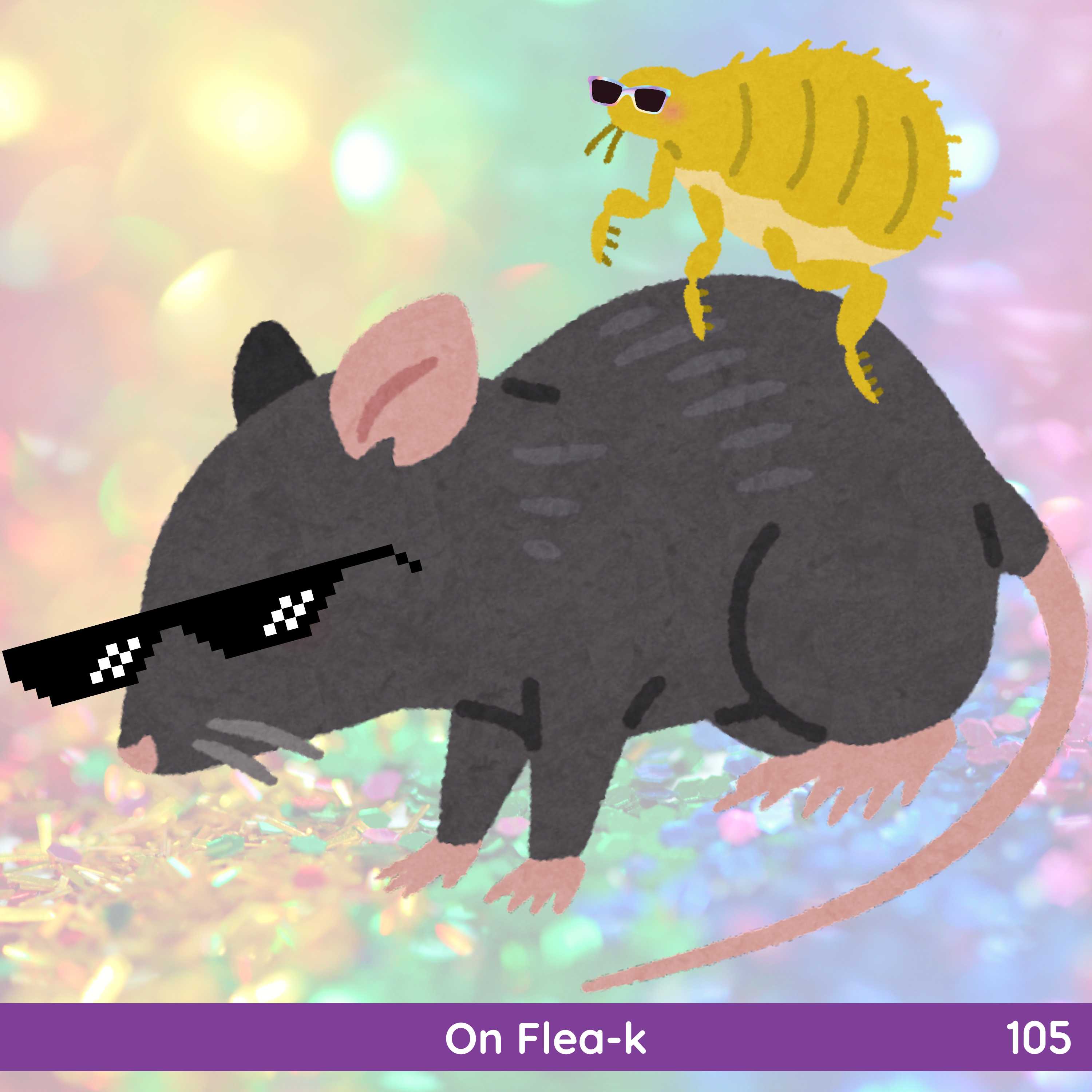Table of Contents
Credits
Hosts: Maria Gabriela Segura, Sara Dong
Guests: Michael Chang, Misti Ellsworth
Writing: Maria Gabriela Segura, Michael Chang, Misti Ellsworth
Edited and produced by Sara Dong with support from the Infectious Diseases Society of America (IDSA)
Our Guests
Maria Gabriela Segura, MD

Dr. Maria Gabriela Segura is a PGY-6 pediatric infectious diseases fellow at UTHealth McGovern Medical School and Children’s Memorial Hermann Hospital. She graduated from medical school at the Universidad de Carabobo Facultad de Ciencias de la Salud, Valencia, and she competed pediatric residency at McGovern Medical School / UTHealth at Houston.
Michael Chang, MD

Dr. Michael Chang is a pediatric ID physician, Associate Professor of Pediatrics, and Director of Pediatric Antimicrobial Stewardship for McGovern Medical School and Children’s Memorial Hermann Hospital. He earned his bachelor’s degree in biochemistry and economics at Rice University and his medical degree at UT Southwestern Medical School in Dallas. He also completed an internship and residency in pediatrics and a fellowship in pediatric infectious diseases at UT Southwestern Medical School. His primary research interest is the application of human-centered design to process improvement and medical education.
Misti Ellsworth, DO

Dr. Misti Ellsworth is a pediatric ID physician, Associate Professor of Pediatrics, and Director of Pediatric Infection Prevention for McGovern Medical School and Children’s Memorial Hermann Hospital. After finishing an undergraduate degree in nutrition at Texas A&M University, Dr. Misti Ellsworth earned her medical degree at the University of North Texas Health Science Center College of Osteopathic Medicine in Fort Worth. She completed a residency in pediatrics at UT Health San Antonio Long School of Medicine, followed by a fellowship in pediatric infectious diseases at McGovern Medical School at UTHealth Houston. Her primary interests are infection prevention, quality improvement and mentorship.
Culture
Gaby enjoys running, spending time with her kids, and watching Netflix and HBO shows.
Misti was excited to watch the new season (3) of The Bear and reading Agatha Christie novels.
Michael shared his love of K pop as well as a band called The Last Dinner Party (which he describes as ambitious pop rock music! https://www.thelastdinnerparty.co.uk/)
Consult Notes
Consult Q
Fever of unknown origin
Case Summary
11 year old previously healthy girl presenting with fever, fatigue, mild cough, emesis, and lab results with anemia, thrombocytopenia, elevated inflammatory markers and elevated liver function tests. She was found to have abdominal aorta thrombus and was eventually diagnosed with murine typhus.
Key Points
Check out these resources!
- Gaby’s publication on murine typhus! Segura MG, Chang ML, Alamarat Z. Murine Typhus: An Overlooked Enemy. Pediatric Annals, 2022;51(11):e436-e439.
- CDC Murine Typhus page: https://www.cdc.gov/typhus/about/murine.html
- And the classics of course!
- Blanton LS, Dumler JS, Walker DH. Rickettsia typhi (murine typhus). In: Bennett JE, Dolin R, Blaser MJ, eds. Mandell, Douglas, and Bennett’s Principles and Practice of Infectious Diseases. 9th ed. Elsevier; 2020:2372–2376.e2, 10.1016/C2012-1-00075-6.
- Kimberlin DW, Lynfield R, Sawyer MH, eds. Murine typhus-endemic or fleaborne typhus. In: Red Book: 2021–2024 Report of the Committee on Infectious Diseases (32nd edition). American Academy of Pediatrics; 2021
Introduction and epidemiology of murine typhus
- Murine typhus, also known as endemic typhus or flea-borne typhus, is caused by Rickettsia typhi
- R.typhi is a Gram-negative obligate intracellular bacteria that infects systemic vascular endothelial cells in mammalian hosts resulting in inflammatory lymphohistiocytic vasculitis and vascular injury that may affect any organ, leading to the typical clinical and laboratory findings seen
- The primary way it spreads is among rates and then to humans through rat fleas (although other flea species can also carry)
- Fleas become lifelong carriers after biting infected rates, which are natural hosts for R.typhi
- Interestingly, opossums and feral cats have become significant sources of murine typhus in the US, especially in suburban areas where cat fleas play a role
- Blanton LS, Idowu BM, Tatsch TN, Henderson JM, Bouyer DH, Walker DH. Opossums and Cat Fleas: New Insights in the Ecology of Murine Typhus in Galveston, Texas. Am J Trop Med Hyg. 2016;95(2):457-461. doi:10.4269/ajtmh.16-0197
- Civen R, Ngo V. Murine typhus: an unrecognized suburban vectorborne disease. Clin Infect Dis. 2008;46(6):913-918. doi:10.1086/527443
- This same flea cycle also spreads Rickettsia felis, which causes a syndrome that looks just like R.typhi
- Transmission occurs through flea feces, which can contaminate wounds, or enters through broken skin from flea bites. There is also the possibility of inhalation of the fecal material as well
- Murine typhus is found worldwide, particularly in warm climates with lots of rats, cats, or opossums, and their associated flea populations
- While cases can occur year-round, in the US most are reported from April to October in places like southern California, southern Texas, the southeastern Gulf Coast, and Hawaii
- Interestingly, it tends to affect adult males more often. In children, though, both boys and girls get it equally, although they might not realize they’ve been bitten by fleas, which can lead to under-diagnosis.
- Back in the 1940s, the U.S. saw a big drop in reported cases thanks to using DDT to control fleas. However, since murine typhus was removed from the list of diseases that doctors must report nationally in 1987, the true number of cases today is uncertain.
- Texas, where it’s still a reportable disease, saw a notable rise from 157 cases in 2008 to over 500 a year from 2017 to 2019, peaking at 738 cases in 2018.
- But even with those numbers, studies suggest there are likely more cases that aren’t being diagnosed, especially in places where the disease is common.
- A study done by Purcell and colleagues in South Texas looked at antibodies for rickettsial typhus in 513 kids aged 1 to 17 and found that about 13% of them had antibodies. That tells us there could be a lot more cases out there than what’s being reported. It’s likely that we’re missing quite a few because of how tricky it can be to spot.
Clinical presentation of murine typhus
- Murine typhus is often missed due to its nonspecific presentation and typically uncomplicated clinical course
- Most people do not recall flea bites or flea infestations, like in the episode’s example case
- Symptoms start within 3 days to 2 weeks after contact with an infected flea
- Typical symptoms include:
- Fever
- Headache
- Body aches and muscle pain
- A macular or maculopapular rash appears around the end of the first week of illness and occurs in approximately 50% of patients
- The rash is usually on the patient’s trunk, although extremities can be involved including the palms and soles
- About 10% of patients may present with petechiae
- It is important to note the lack of rash should not exclude the diagnosis of murine typhus!
- The classic triad of fever, headache, and rash only occurs in one-third to half of patients.
- Common laboratory abnormalities include:
- Elevated liver enzymes
- Elevated lactate dehydrogenase
- Thrombocytopenia
- High erythrocyte sedimentation rate
- Murine typhus is usually self-limited, resolving in 1-2 weeks
- The episode’s example was an unusually severe case, though complications of murine typhus have been reported in up to 30% of cases, with severe disease occurring more often in adults
- The most common complications include pulmonary issues (pneumonia, pulmonary effusion, respiratory failure), followed by central nervous system involvement (altered level of consciousness, meningism, seizures, ataxia), and acute kidney injury
- Less frequently reported complications include disseminated intravascular coagulation, septic shock/multiorgan failure, and hemophagocytic syndrome
- Severe hemolysis has been reported in patients with glucose-6-phosphate dehydrogenase deficiency, hemoglobinopathies, and thalassemia
- About 5-10% of all cases require ICU admission
- Overall case-fatality rate is estimated to be 0.4%
- Data from Whiteford et al suggests that a substantial proportion of pediatric patients had severe illness characterized by a febrile interval of 14 days or more (23% of patients) or hospitalization of 7 days or more (36% of patients)
- Once the appropriate therapy has been initiated, most patients defervesced rapidly (1-3 days).
Diagnosis of typhus
- There is no reliable diagnostic laboratory test in the early phase of illness, but an undifferentiated febrile illness (especially in a patient with rash, thrombocytopenia, or mildly elevated LFTs) should raise your suspicion for murine typhus or another rickettsial disease that can mimic typhus in the appropriate epidemiologic setting
- Remember that many patients will not remember a flea bite or contact with rodents —> the initial diagnosis and decision to treat should be based on the clinical and laboratory features
- The most common method for diagnosis of murine typhus are paired acute and convalescent serologies
- Diagnosis can be established by a fourfold antibody rise in IgG titer between acute and convalescent serum samples taken at least 2 weeks apart
- IgM assays are available and offer reasonable specificity but are hampered by variable sensitivity
- R.typhi can cross-react with R. prowazekii (epidemic typhus) and a variety of spotted fever group antigens (including R.felis and R.rickettsii)
- Immunohistochemical staining and PCR on tissue and blood can be performed by select labs but are not widely available
- PCR can suffer from poor sensitivity due to low levels of rickettsemia that vary by stage of illness, receipt of appropriate therapy, and other factors
- Paris DH, Dumler JS. State of the art of diagnosis of rickettsial diseases: the use of blood specimens for diagnosis of scrub typhus, spotted fever group rickettsiosis, and murine typhus. Curr Opin Infect Dis. 2016;29(5):433-439. doi:10.1097/QCO.0000000000000298
- In this case cell free microbial DNA testing was positive, but very little data is available on the performance of that test for the diagnosis of murine typhus.
Management of murine typhus
- Empiric treatment is recommended for all patients in whom a diagnosis of murine typhus is suspected
- Although spontaneous recovery occurs within 2 weeks in some untreated patients, rare fatalities have been reported
- Antibiotics shorten the duration of illness and fever usually resolves 1-3 days after starting therapy
- Dumler JS, Taylor JP, Walker DH. Clinical and laboratory features of murine typhus in south Texas, 1980 through 1987. JAMA. 1991;266(10):1365-1370.
- Howard A, Fergie J. Murine Typhus in South Texas Children: An 18-year Review. Pediatr Infect Dis J. 2018;37(11):1071-1076. doi:10.1097/INF.0000000000001954
- Tsioutis C, Zafeiri M, Avramopoulos A, Prousali E, Miligkos M, Karageorgos SA. Clinical and laboratory characteristics, epidemiology, and outcomes of murine typhus: A systematic review. Acta Trop. 2017;166:16-24. doi:10.1016/j.actatropica.2016.10.018
- To date, there are no clinical trials conducted regarding treatment of murine typhus. Recommendations are based on analysis of retrospective studies
- Doxycycline is the treatment of choice, regardless of patient age
- The optimal duration has not been established. General recommendations are to continue treatment for at least 48-72 hrs after patient becomes afebrile or 7-14 days, whichever is longer
- Again, early diagnosis is usually based on clinical suspicion and epidemiology, and treatment should not be withheld awaiting confirmatory laboratory results in order to avoid severe and potentially fatal complications.
Michael and Misti discussed the broad differential diagnosis for this case / murine typhus-, which included both infectious and non-infectious syndromes. They described their experience with murine typhus in the setting of MIS-C
- The symptoms of typhus are primarily the symptoms of systemic inflammation and systemic vasculitis, so the common symptoms will lead to differentials that often overlap and include both infectious and non-infectious syndromes like Kawasaki disease or MIS-C
- Michael described the experience early at the start of the SARS-CoV-2 pandemic where they suddenly had several previously healthy patients presenting with signs of systemic inflammation with elevated C-reactive protein, triglycerides, procalcitonin, ferritin as well as liver inflammation. They all had fever and rash, and this was just a few weeks after the first publications about MIS-C or PIMS-TS were coming out from Europe. The incidence of SARS-CoV-2 at the time was really still quite low, and none of the patients or families reported known COVID positive tests or exposures
- Upon review with patients and their families, the then fellow Zain Alamarat (now Pediatric ID faculty at University of Arkansas) discovered that all patients had dog exposures, several with known fleas. This was also in the setting of many having low WBC counts and platelets
- They confirmed an increased incidence of murine typhus with serologic testing —> summarized in this article: Alamarat Z, Pérez N, Wootton S, et al. Murine Typhus Outbreak Presenting as Multisystem Inflammatory Syndrome in Children During SARS-CoV-2 Pandemic. Pediatr Infect Dis J. 2020;39(12):e447-e449. doi:10.1097/INF.0000000000002947
- At the same time, Texas Children’s Hospital was also reporting a similar experience, described in this paper from Dean et al: Dean A, Asaithambi R, Neubauer HC. Murine Typhus in 5 Children Hospitalized for Multisystem Inflammatory Syndrome in Children. Hosp Pediatr. 2021;11(4):e61-e65. doi:10.1542/hpeds.2020-005652
- They still are not sure why we saw that spike either, whether it was more kids outside because of school closures, or more parents seeking medical attention because of concern of MIS-C due to media exposures.
Doxycycline use in pediatrics
- Tetracyclines were discovered in the 1940s and have broad-spectrum activity against many types of bacterial pathogens. They are the drug of choice for tick and flea-based infections like murine typhus, rocky mountain spotted fever, and ehrlichiosis. Why the aversion to doxycycline in children and pregnant women?
- Michael discussed how there is a deeply rooted aversion to prescribing doxycycline for pregnant women and pediatric patients less than 8 years old. So here a bit of background and some references!
- Tetracycline binds to calcium which can stain permanent teeth in children and reportedly inhibit bone growth to a degree
- In mouse models it did lead to skeletal problems in mouse embryos at 11x the human dose, and we do know that tetracyclines can cross the placenta.
- As such, tetracyclines basically were not used in pregnant women nor for children under the age of 8 years until all their permanent teeth were in.
- Basics of tetracyclines: Sauberan, Neely, Bradley. Principles and Practice of Pediatric Infectious Diseases, 292, 1537-1563.e4
- Grossman EF, Walcheck A, Freedman H, Flanagan. Tetracyclines and permanent teeth: The relation between dose and tooth color. Pediatrics (1971) 47 (3): 567–570. https://doi.org/10.1542/peds.47.3.567
- However, doxycycline is not tetracycline.
- Doxycycline was a second generation drug synthesized in 1972, with improved solubility and decreased calcium binding
- However, there is a real lack of clinical data in pregnancy for doxycycline
- The FDA currently says “There have been no published human data showing that fetal exposure to doxycycline causes cosmetic staining of the primary teeth, however this cannot be ruled out because of the tetracycline class effect.” which is to say that because doxycycline is a tetracycline we can’t say for sure, since we lack data
- They further clarify that essentially there is no data to “prove” that doxycycline is safe
- But also cite a review of the Teratogen Information System (TERIS) at University of Washington School of Public health, considered a global reference for teratogenic safety, suggests that normal doses of doxycycline during pregnancy are unlikely to pose risk
- Lacking evidence for harm, it’s important to note that doxycycline is the first-line drug in pregnancy for post-exposure prophylaxis for anthrax.
- FDA Page on Doxycycline Use by Pregnant and Lactating Women
- Friedman JM, Polifka JE. Teratogenic effects of drugs: A resource for clinicians (TERIS). Baltimore, MD: The Johns Hopkins University Press; 2000. pp. 149–195.
- Doxycycline in pediatrics:
- There is at least one published study from 2007 from Volovitz et al, in which the authors tried to make the title as clear as possible related to their findings: Volovitz B, Shkap R, Amir J, Calderon S, Varsano I, Nussinovitch M. Absence of tooth staining with doxycycline treatment in young children. Clin Pediatr (Phila). 2007;46(2):121-126. doi:10.1177/0009922806290026
- Yet, 7 years after that publication, clinicians were still hesitant to give doxycycline to patients less than 8 years of age. Described in: Zientek J, Dahlgren FS, McQuiston JH, Regan J. Self-reported treatment practices by healthcare providers could lead to death from Rocky Mountain spotted fever. J Pediatr. 2014;164(2):416-418. doi:10.1016/j.jpeds.2013.10.008
- This survey worryingly showed that for kids under the age of 8 years of age, providers were not prescribing doxycycline (the drug of choice when concerned about RMSF), despite the fact that pediatric patients less than 9 years of age have the highest case fatality rate of any age group for RMSF
- One of the leading factors to mortality is delay in diagnosis and delay in initiation of appropriate therapy which is doxycycline. This concerned the CDC so much, that the next year, in 2015 Todd et al published a paper titled bluntly “No Visible Dental Staining in Children Treated with Doxycycline for Suspected Rocky Mountain Spotted Fever”: Todd SR, Dahlgren FS, Traeger MS, et al. No visible dental staining in children treated with doxycycline for suspected Rocky Mountain Spotted Fever. J Pediatr. 2015;166(5):1246-1251. doi:10.1016/j.jpeds.2015.02.015
- You can also take a look at this CDC page dedicated to doxycycline and lack of teeth staining
- Take-home: Don’t hesitate to prescribe doxycycline in children if you suspect a vector-borne illnesses like murine typhus or more urgently RMSF!
Considering prevention of typhus, particularly in endemic zones
- Prior infection does provide lasting immunity as much as is known, but there is no vaccine for murine typhus
- The key really is avoidance and elimination of flea vectors and rodent-infested areas
- The US was successful in reducing the incidence of murine typhus with the pesticide DDT to control flea vectors, but obviously with unintended consequences of DDT
- You have to control fleas before hosts, as fleas can easily find other hosts, as in Texas where it seems that in addition to rodents, opossums and cats are playing a role in transmission
- Of course flea control is easier said than done, but some recommendations:
- If you have pets, clean areas where fleas can breed like pet bedding, rugs
- Treat your pets per your veterinarians instructions
- Potentially calling a pest control expert if needed. This may take several cycles and potentially months to achieve
- Minimize possum and rodent exposure by making sure your waste bins are secured.
- Make sure your sandboxes are covered to avoid feral cats using them as litter boxes
- If you have pets, clean areas where fleas can breed like pet bedding, rugs
- CDC page on Vector Control Resources
Infographics
Goal
Listeners will be able to diagnose and treat murine typhus
Learning Objectives
After listening to this episode, listeners will be able to:
- Identify how murine typhus is transmitted
- Compare and contrast the typical clinical features of murine typhus with MIS-C
- Describe the context and importance of prescribing doxycycline in children that have a suspected vector-borne illness like murine typhus or Rocky Mountain Spotted Fever
Disclosures
Our guests (Gaby Segura, Michael Chang, Misti Ellsworth) as well as Febrile podcast and hosts report no relevant financial disclosures
Citation
Segura, M.G., Chang, M., Ellsworth, M., Dong, S. “105: On Flea-k”. Febrile: A Cultured Podcast. https://player.captivate.fm/episode/a0f13b85-124c-44ca-9b66-8def6ce0bddf


